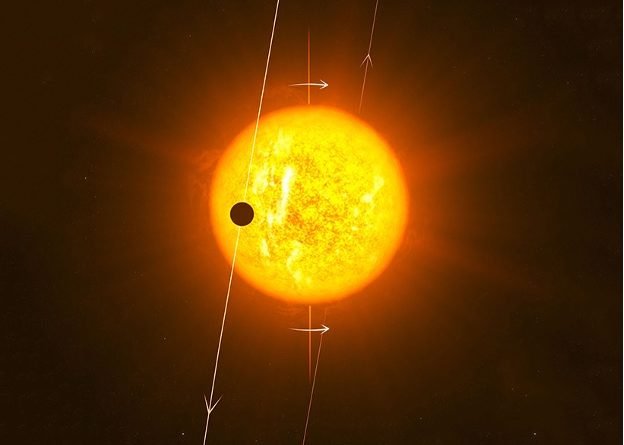Exoplanets with topsy-turvy orbits found around inconspicuous star
[ad_1]
Surprising planetary architectures
This is not the first time astronomers have measured the orientation of the orbits of several planets around the same star. For example, the orbits of two planets in the Kepler-56 system are both tilted by about 45° compared to their star’s equatorial plane. Likewise, the primary in the triple-star system K2-290A harbors two planets whose orbits are tilted by 124° compared to their star — and those planets actually move in the opposite direction of their star’s rotation.
Still, the HD 3167 system is so far unique. “I haven’t seen such a large mutual inclination actually measured in a system of two close-in planets before,” says Rebekah Dawson, an associate professor at Pennsylvania State University who was not involved in the new study.
What could cause planets in the same system to have such profoundly different orbits? The team suggests that another, more massive planet might be lurking in the outskirts of the system. If so, its gravity could have caused the misaligned orbits of the inner planets. On the other hand, the innermost planet has been so strongly coupled to the star that it has retained its initial alignment.
Dawson agrees that the proposed scenario is viable. However, she says, at this point the available information is not sufficient to make firm conclusions. It would help to know the HD 3167c’s eccentricity, which is a measure of how elliptical an orbit is. “In most [planet perturbation] cases, I would expect a high eccentricity,” says Dawson.
Bourrier and his colleagues are already busy further scrutinizing the system. Additional observations of the star’s light should further pin down the planets’ orbits, including their eccentricities, which are not yet known. Furthermore, the team will search for direct evidence of the putative fourth planet. “With direct imaging you can, if you are lucky, directly detect light coming from an object,” says Bourrier.
Regardless of the outcome, the more planetary systems we study, the more it is clear that our solar system had a very different — and perhaps much smoother — history than many others. But a continuing stream of unexpected discoveries, such as the HD 3167 system, will help astronomers take stock of all possible planetary formation scenarios, perhaps shedding more light on what makes our Sun and the planets around it so special along the way.
[ad_2]
Original Post


533 thoughts on “Exoplanets with topsy-turvy orbits found around inconspicuous star”